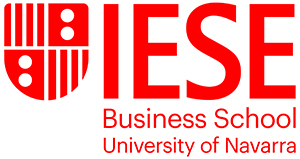How many times have you left a meeting thinking that you didn’t really need it, that you wasted your time or that the matter in question could have been resolved with a simple email?
According to a study by the human resources firm Zippia, workers dedicate three to five hours a week in meetings, i.e. 15% of each working day. And this is only counting the duration of the meetings, not the time that many people spend preparing them. Unfortunately, the study warns, around 70% of these events are considered unproductive.
Why do we attend meetings that we think are unnecessary?
Indeed, very few professionals dare to turn down a single meeting that crops up each day in their diary. We keep going to them, even when we seriously doubt their usefulness, And this tends to happen for various reasons. Among others:
- We’re worried we’ll miss some significant new development. If information is power, we tend to think that not knowing the department’s new developments could weaken us.
- We don’t want to be the one who “didn’t go to the meeting”. Not attending a meeting we are invited to could be interpreted as a lack of interest in the matter to be discussed.
- It makes us uncomfortable when other directors meet with our teams, even when our presence is not indispensable.
Anyway, there are a lot of meetings that are necessary, because they are about fundamental aspects of the business and organization, or because they form an essential part of the teambuilding and communication of the teams within the company. According to a recent Gallup study, most workers consider communication to be key to feel involved in a project.
For all these reasons, as an executive it is essential to learn to organize more efficient meetings and recognize when a meeting is really useful, to avoid wasting your teams’ time, attention, and energy. Here are a few tips to achieve this:
How to differentiate between useful meetings and unproductive ones
You know you’re looking at a useful meeting when you see that it clearly meets these three requirements:
1. It is justified for all participants
In principle, only people who will need to speak and prepare for the meeting should attend it. And also people who, although they won’t be speaking, definitely need the information that will be shared.
2. The purpose is clear and specific
A meeting must never be called for vague, generic reasons on the monitoring of certain matters or with a specified frequency. If you can’t clearly state what the purpose of the meeting is, then maybe you should ask yourself if it is really worth holding it or if it makes more sense to hold similar meetings in the future. Your main guide should be to prioritize meetings that serve to resolve problems or meet a need and disregard those that simply reiterate that things are continuing pretty much the same as at the time of the last meeting.
3. They have a flexible but firm structure
Finally, the structure of the meeting -in terms of the times and matters to be addressed- have a margin for unforeseen deviations, but these must not take over or prolong it unnecessarily. If the meeting ends up touching on matters that are not on the agenda or does not respect the agreed times, it is very likely to end up being unproductive.
Not all meetings are the same nor do they serve the same purpose
It is clear that we need to avoid unproductive meetings or those that simply do not serve their purpose. However, as you have probably experienced, it is not always possible to measure or compare the productivity of meetings when they are completely different from one another.
That’s why it’s crucial to know how to identify at least the three main types of meeting and know what to expect from each one:
1. Decision-making meetings
Here it should be especially clear who can make the decisions, the matters in relation to which they are to be made and the level of consensus necessary for them to be made.
2. Creative meetings
The goals must be specific, although somewhat less precise than normal. For example, we know that we need to develop or market a product, but the route to take is still not clear. The structure must be especially flexible and avoid chaos at the same time.
3. Informative and coordination meetings
The justification of the meeting is key to this being truly useful. There are many ways to inform and coordinate that do not require a one-hour meeting at which you sometimes end up talking about the department or the company in general for want of more substantive topics.
As an executive, you know that there is not one single recipe that works for all organizations alike. IESE’s programs for executives will help you to improve your skills as a leader and design strategies that allow you to detect and eliminate unnecessary meetings and improve those that are really useful and productive for your teams.
This is how Netflix has reduced its meetings by more than 65%
There are many executives who, like you, are considering reducing the number of meetings in their companies. And maybe it’s not such a bad idea.
Netflix, for example, has identified the cause of the abundance of superfluous meetings in its organization and has, in its own way, managed to eliminate more than 65% of its meetings with the support of more than 85% of its workforce. Its recipe has two simple ingredients:
1. No meeting ever lasts more than half an hour.
2. Many informative meetings have been replaced with text, video, or audio notes.
Although this approach might be too radical for your organization, as an executive you have lots of resources and examples to make the meetings in your company more practical and efficient.

















